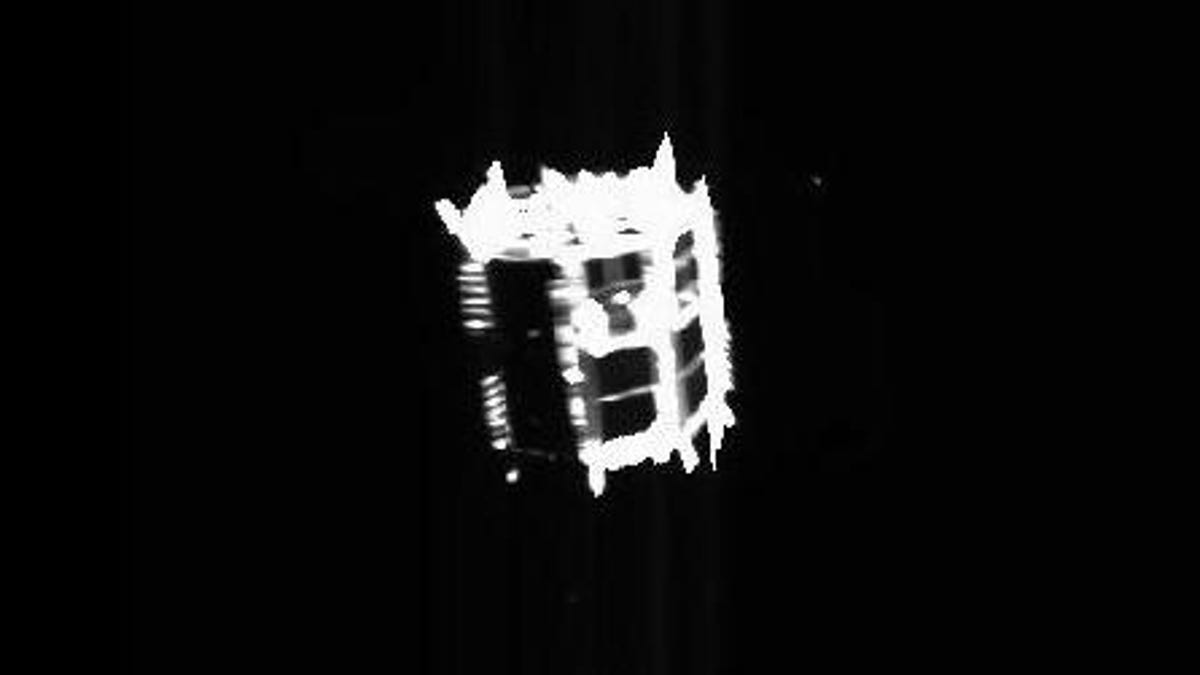Japan's Hayabusa2 spacecraft just shot a tiny rover at asteroid Ryugu
The asteroid-hunting spaceship takes a long shot in the dark.

MINERVA-II2, captured just after separation.
Japan's Hayabusa2 spacecraft has been chasing near-Earth asteroid Ryugu since launch in Dec. 2014, getting up close and personal with the space rock. During the chase it has deployed two rovers to Ryugu's surface and blasted a hole in Ryugu's surface to collect samples with a tiny cannonball. Its new mission feels like the natural progression for Hayabusa2 -- now it's shooting a rover at the surface.
When we say shooting, we mean it in the basketball sense here. The rover is the basketball and Hayabusa2 is taking a three-point shot from 3,280 feet away. It's shooting from the parking lot and it's doing it in the park with a communications delay. Impressive, but will it make the basket?
Hayabusa2 has been carrying the MINERVA-II2 capsule, which itself contains a rover. That rover, built by Tohoku University in Japan, is designed to briefly live on the surface of the asteroid. It's only about 6 inches wide and the same tall, but the cylindrical, lightweight rover carries a couple of cameras, in addition to an accelerometer and thermometer to perform science at the surface.
Members of the by Japanese space agency, JAXA, have previously reported errors with the MINERVA-II2 rover. In November 2018, Elizabeth Tasker told the Planetary Society "communication between the rover and spacecraft was fine, but the CPU did not respond." That throws up the possibility the rover will not be able to collect data and return it to Hayabusa2 and Earth for analysis.
However, JAXA decided to forge ahead anyway and, on Wednesday, the rover was deployed by Hayabusa2 at an altitude of one kilometer (0.62 miles) from the surface. It is now en route to Ryugu.
Scientists at JAXA celebrated the separation with fist pumps and smiles, but now the mission becomes about getting the rover to the surface safely.
[MINERVA-II2] Group photo to celebrating the successful separation of MINERVA-II2! It is well past midnight and are now a little tired... but the operation is ongoing! In the future, we will observe the orbital motion of MINERVA-II2 after its separation. pic.twitter.com/BLqS9UQB8I
— HAYABUSA2@JAXA (@haya2e_jaxa) October 2, 2019
An overview of the mission provided JAXA shows the operation in greater detail. According to JAXA's plans, the rover should touch down on the surface by Oct. 8. Even if the rover can't send back data to Hayabusa2, it will still perform a crucial function. As it descends to the surface of Ryugu, it will help JAXA scientists make a more accurate estimation of the asteroid's gravitational field. It will also provide data to the agency on separating small probes to the surface.

